Australia is a land of extraordinary landscapes, where vast deserts, tropical rainforests, and rugged coastlines meet to create some of the world’s most remarkable geological features. Among its many natural wonders, the country is home to some truly unique rock formations that tell the story of millions of years of geological activity. From the iconic Uluru to the stunning Bungle Bungles, Australia’s rock formations are not only breathtaking to look at but also offer a glimpse into the Earth’s ancient past.
If you’re a lover of nature, geology, or simply seeking to experience the incredible diversity of Australia’s landscapes, these unique rock formations are must-see destinations. Let’s take a journey to some of the most fascinating and iconic rock formations in Australia.
1. Uluru (Ayers Rock), Northern Territory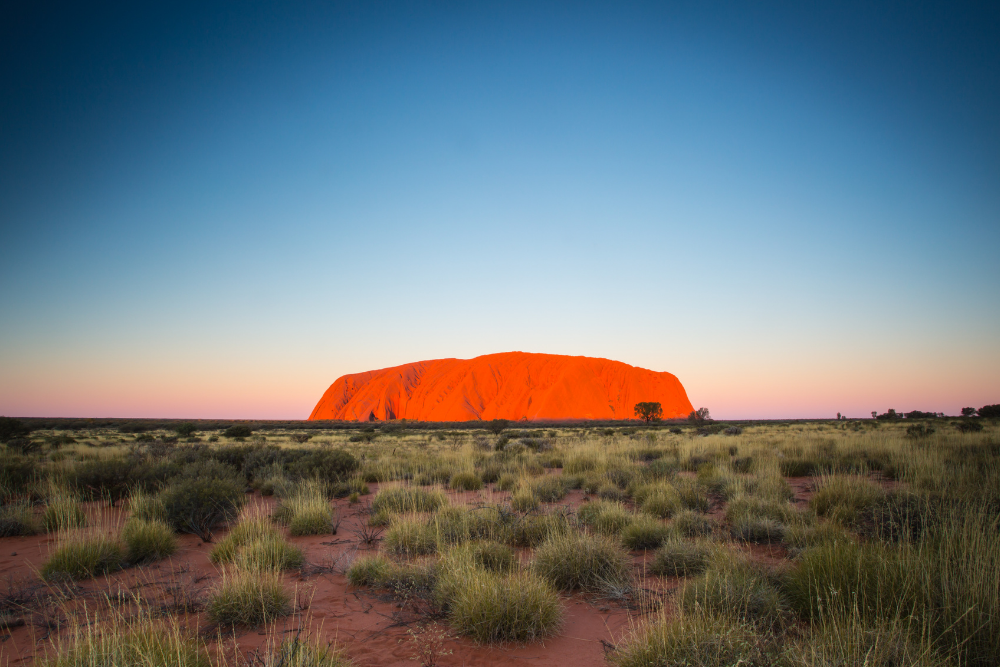
Perhaps Australia’s most famous rock formation, Uluru, also known as Ayers Rock, is an ancient sandstone monolith located in the heart of the Red Centre. Standing 348 meters (1,142 feet) high and measuring 9.4 kilometers (5.8 miles) around its base, Uluru is one of the world’s largest and most impressive single rock formations. Its deep red color is especially striking at sunrise and sunset, when the changing light makes it appear to glow, offering a mesmerizing view.
- Significance: Uluru holds deep cultural significance for the local Anangu people, the traditional custodians of the land. It is considered a sacred site, and visitors are encouraged to respect the cultural and spiritual importance of the rock. Climbing Uluru was officially banned in 2019 to protect the cultural integrity of the site.
- What to Do: While visiting, you can enjoy guided walks around the base to learn about Uluru’s geology and its spiritual significance. The Uluru-Kata Tjuta National Park offers a range of eco-friendly activities, including sunrise and sunset viewing points, cultural tours, and hiking trails around the surrounding area.
2. The Bungle Bungles, Western Australia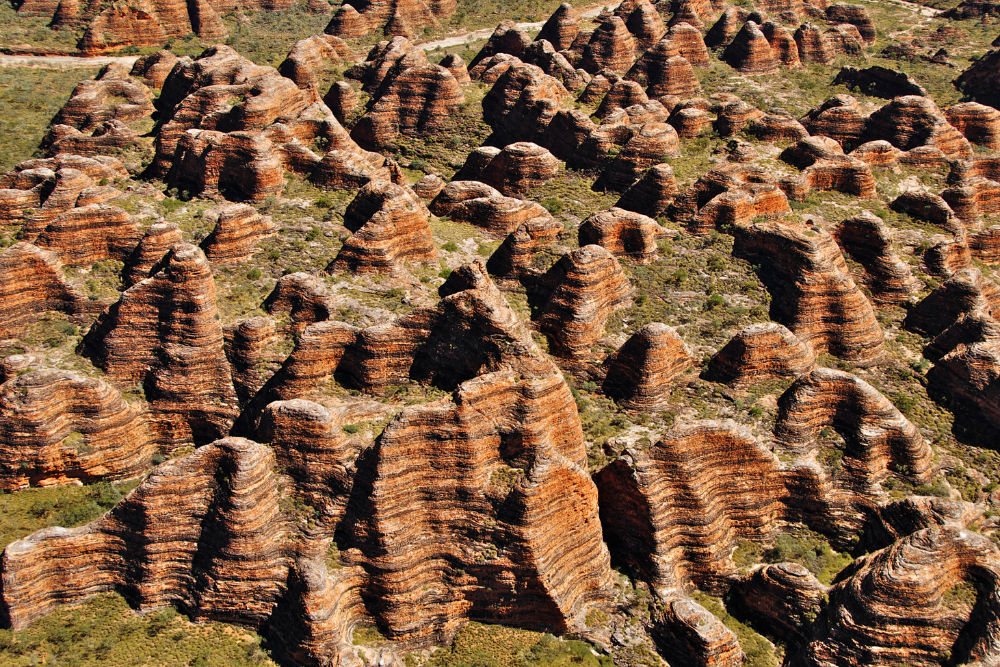
Located in the Purnululu National Park in Western Australia, the Bungle Bungles are a series of striking, beehive-shaped rock formations made of sandstone, dating back over 350 million years. These unique formations are characterized by their orange and black-striped patterns, created by layers of sedimentary rock and ancient erosion processes.
- Significance: The Bungle Bungles are a World Heritage-listed site, and their distinctive appearance is the result of millions of years of weathering and geological change. They were largely unknown to the outside world until the 1980s, despite being known to local Indigenous groups for thousands of years.
- What to Do: Explore the Bungle Bungles on a scenic flight or take a guided walk to admire the towering domes up close. Popular hikes like Piccaninny Creek and Cathedral Gorge lead visitors through the dramatic landscape, offering stunning views of the formations and the surrounding wilderness.
3. The Pinnacles, Western Australia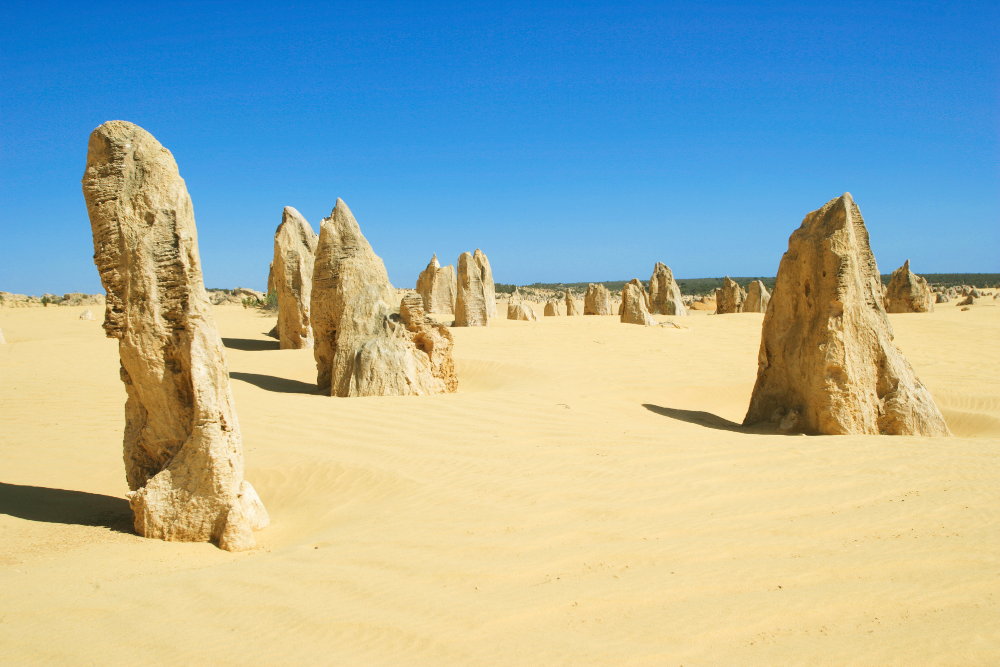
Located within the Nambung National Park, the Pinnacles Desert is home to an extraordinary array of limestone spires that rise dramatically from the sand dunes. These spires, some reaching up to 3.5 meters (11.5 feet) high, were formed over thousands of years by the erosion of ancient seashells, leaving behind the iconic rock pillars.
- Significance: The Pinnacles Desert is a fascinating example of erosion and natural sculpture, where wind and rain have slowly shaped the land over time. The desert’s otherworldly landscape makes it a popular destination for photographers and nature lovers.
- What to Do: You can explore the Pinnacles Desert on foot or by car via the designated loop drive. Sunrise and sunset are particularly magical times to visit, as the golden light creates long shadows and brings out the warm hues of the rocks. The nearby Pinnacles Desert Discovery Centre offers informative exhibits about the formation of the Pinnacles.
4. The Olgas (Kata Tjuta), Northern Territory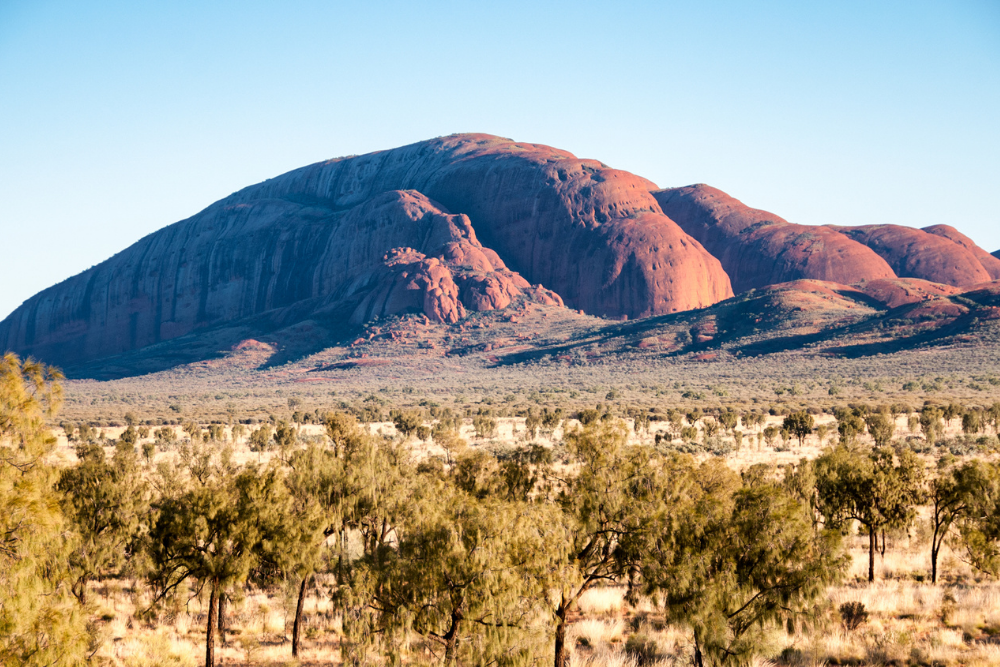
Located just 25 kilometers west of Uluru, Kata Tjuta (also known as The Olgas) is a group of 36 towering rock domes formed from ancient, highly resistant sandstone. The formation is much older than Uluru and is thought to be over 500 million years old. Kata Tjuta is often overlooked in favor of Uluru, but it’s just as impressive and offers a more rugged landscape.
- Significance: Like Uluru, Kata Tjuta is a sacred site for the Anangu people. Its name means “many heads” in the local language, referring to the many domes that rise from the desert floor.
- What to Do: Hiking trails such as the Valley of the Winds offer a chance to walk through the domes, experiencing the stark beauty of the area up close. The trail provides spectacular panoramic views of the rock formations and the surrounding desert, and the unique flora and fauna make for an enriching experience.
5. Wilpena Pound, South Australia
Nestled in the heart of the Flinders Ranges, Wilpena Pound is a natural amphitheater formed by the erosion of ancient mountains. The massive rock basin is about 17 kilometers (10.5 miles) in diameter, with steep walls of rugged mountains surrounding a flat, grassy floor.
- Significance: Wilpena Pound is not only a geological wonder but also a cultural landmark for the Adnyamathanha people, who have lived in the region for thousands of years. It’s a place steeped in cultural stories and natural history.
- What to Do: You can explore Wilpena Pound through a variety of activities, including hiking, scenic flights, and 4WD tours. The Ikara-Flinders Ranges National Park has a network of trails, including the popular Patawarta Hill walk, which offers sweeping views of the Pound. It’s also a great spot for wildlife watching, with kangaroos, emus, and other native animals often spotted in the area.
6. The Twelve Apostles, Victoria
Located along the Great Ocean Road in Victoria, the Twelve Apostles are a series of towering limestone stacks rising dramatically from the Southern Ocean. These sea stacks were formed over millions of years by erosion and the relentless forces of wind and water.
- Significance: The Twelve Apostles are one of Australia’s most iconic coastal rock formations, drawing millions of visitors each year. Despite the name, there are currently only eight of the original limestone stacks remaining, with others having collapsed over time due to the powerful forces of nature.
- What to Do: The Twelve Apostles are easily accessible by car, with a visitor center offering great views and informative displays about the formation’s history. For the best experience, visit at sunrise or sunset when the rocks are bathed in golden light, creating stunning photo opportunities. Helicopter tours are also available for an aerial view of this dramatic coastline.
7. The Remarkable Rocks, Kangaroo Island
Located in Flinders Chase National Park on Kangaroo Island, the Remarkable Rocks are a collection of weathered granite formations that have been shaped by wind and sea over millions of years. These unique formations are scattered across a rocky outcrop, creating a surreal landscape that is perfect for exploring.
- Significance: The Remarkable Rocks are a natural wonder and a symbol of the island’s rugged beauty. The unique shapes of the rocks, including some that resemble animals and other recognisable forms, make them a favorite for photographers and nature enthusiasts.
- What to Do: Visitors can walk along designated paths around the rocks, marveling at the impressive sculptures created by the forces of nature. The rocks are also perfectly positioned to offer breathtaking views of the surrounding coastline and the Southern Ocean. Kangaroo Island itself is an eco-paradise, offering wildlife viewing opportunities and eco-friendly accommodations.
8. Mount Arapiles, Victoria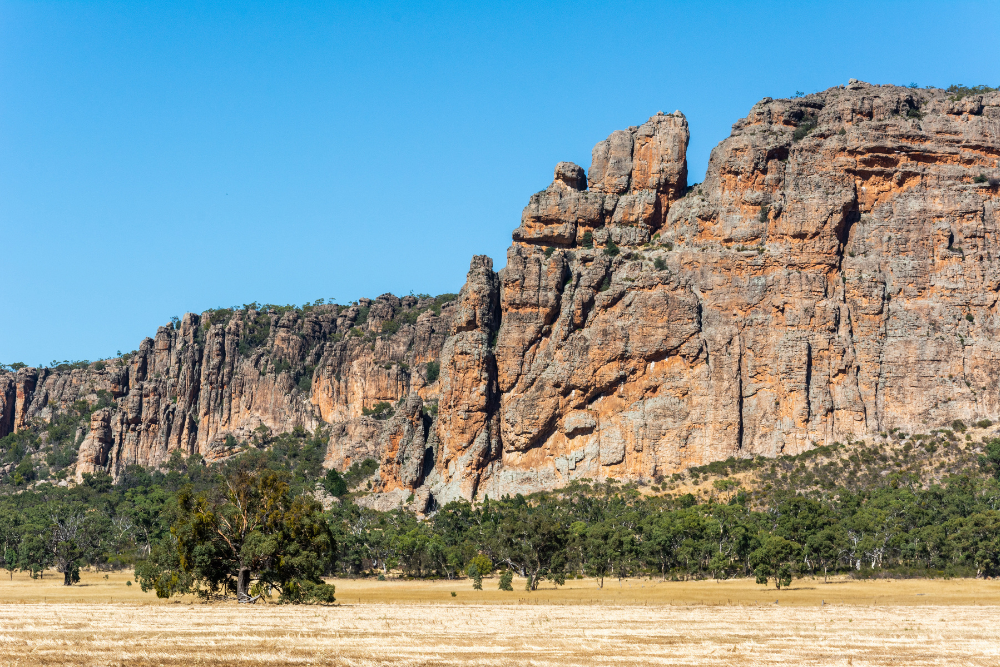
For rock climbers and outdoor enthusiasts, Mount Arapiles in Victoria is a must-visit destination. This isolated peak, rising 125 meters (410 feet) above the surrounding plains, is renowned for its sheer faces, jagged edges, and perfect climbing conditions.
- Significance: Mount Arapiles is an important geological and recreational site. It’s one of Australia’s best rock climbing destinations, attracting climbers from all over the world. The mountain is made of resistant sandstone, which has been shaped over millions of years by erosion.
- What to Do: Climbers will find over 2,000 routes to explore on the mountain’s rugged surfaces. If you’re not a climber, you can still enjoy the incredible views from the top, or explore the surrounding Grampians National Park, which is filled with natural beauty and wildlife.
Conclusion
Australia’s rock formations offer some of the most striking and unique landscapes in the world, each telling the story of millions of years of geological processes. Whether you’re exploring the sacred Uluru, hiking through the Bungle Bungles, or marveling at the Pinnacles Desert, these natural wonders are a testament to the power and beauty of nature. No matter where your travels take you in Australia, the chance to witness these awe-inspiring rock formations will leave you with a greater appreciation for the ancient forces that have shaped this incredible land.












